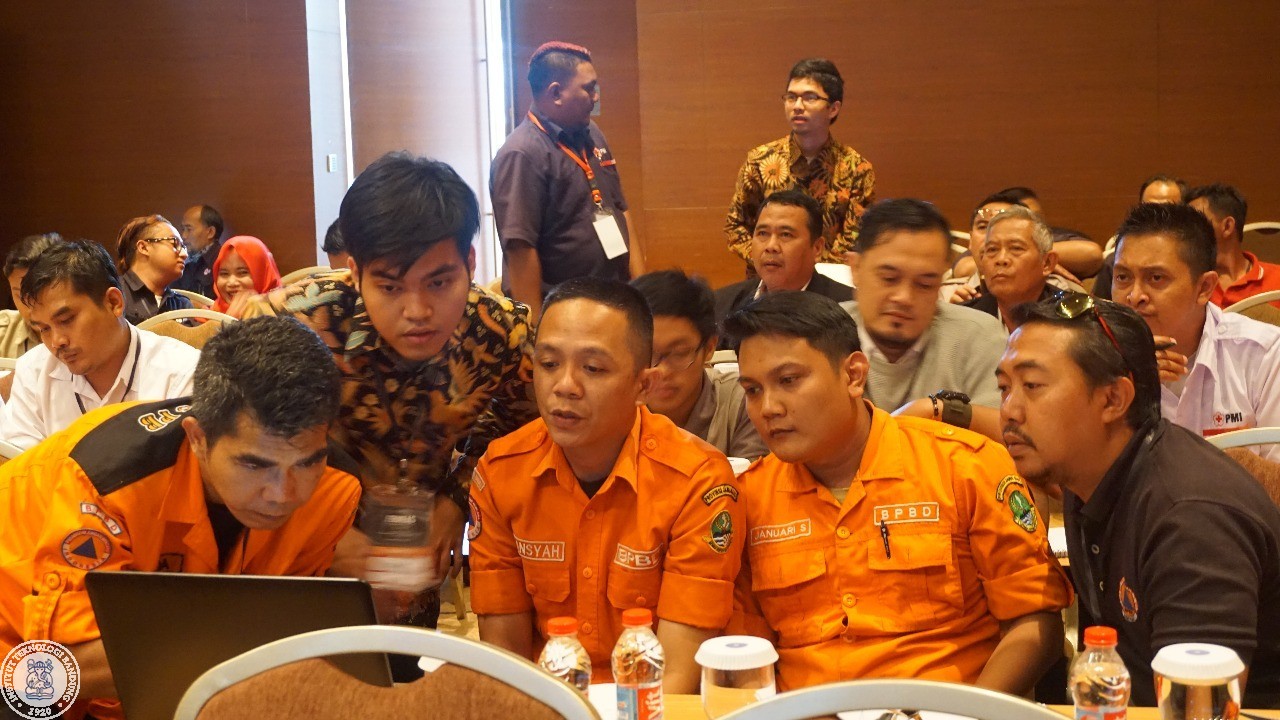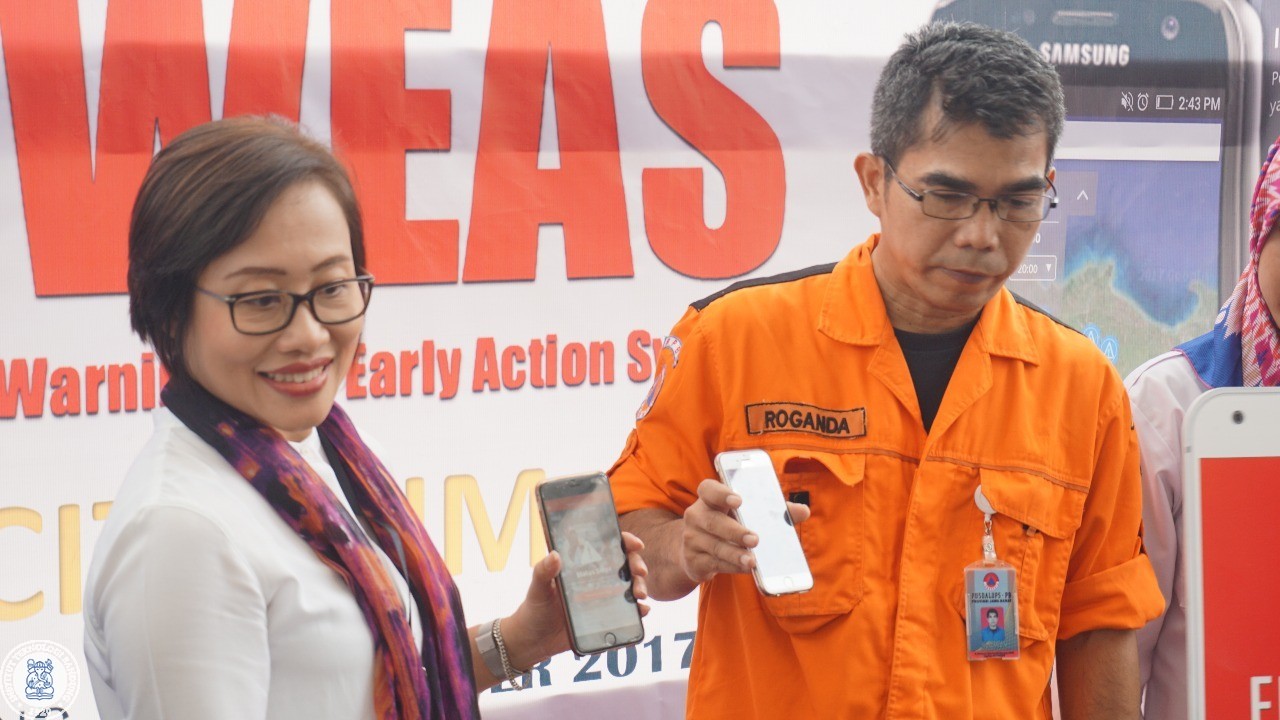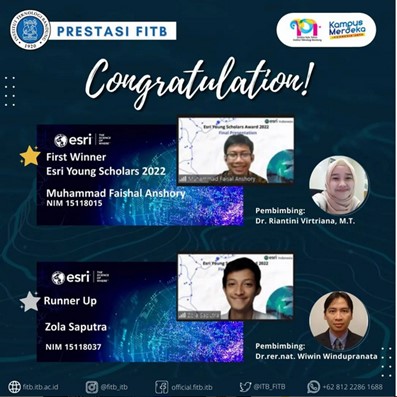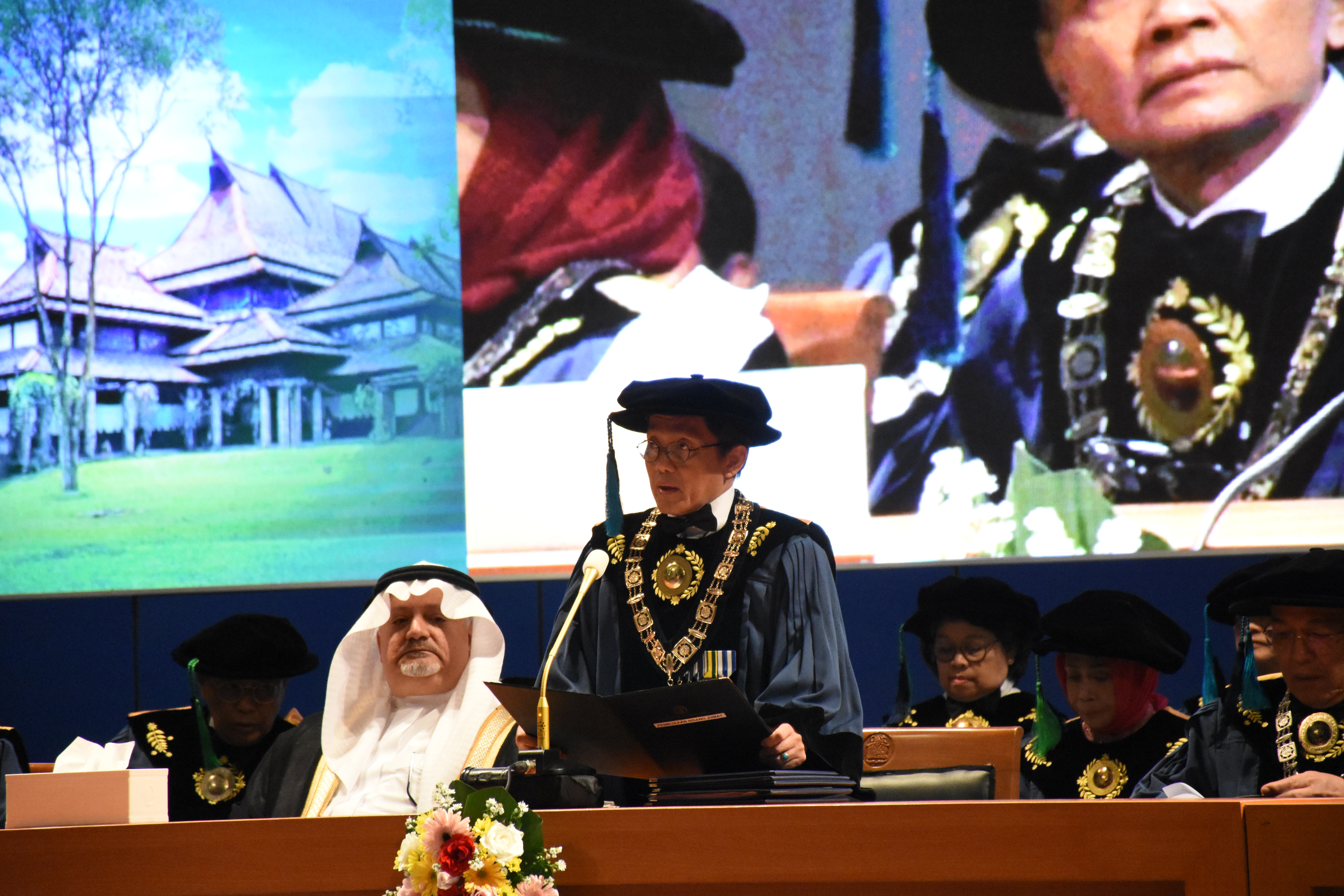FEWEAS, Floods Disaster Mitigation Application by ITB Experts

BANDUNG, itb.ac.id - Entering the rainy season, some areas in Indonesia appear to be on alert, especially in river basin areas. Observation of rainfall and water level along the Citarum River Basin (DAS) became the main concern of the people of Bandung.
Institut Teknologi Bandung (ITB), supported by International Federation of Red Cross and Red Crescent Societies (IFRC), Indonesian Red Cross (PMI), Zurich Insurance Indonesia, Perum Jasa Tirta II, Regional Disaster Management Agency (BPBD) of West Java, Public Works and Public Housing Ministry Center for Research and Development of Water Resources (PUSAIR), and Public Works and Public Housing Ministry Directorate of Water Resources' Citarum River Basin Area Center (BBWS), created an application to anticipate floods in some areas around Citarum River Basin. The Android, iOS and Web Based system app is named FEWEAS (Flood Early Warning and Early Action System). FEWEAS Citarum is the second generation after the previous FEWEAS that was programmed for Bengawan Solo river area.
"The procurement of observation stations is quite expensive, especially the treatment. Hence, ITB cooperates with Perum Jasatirta II operating in thirteen suspected water post points in the Citarum river basin which are connected with FEWEAS. The thirteen points are Siphon Cibebet, Jengkol Weir, Macan Weir, Gadung Weir, Salamdamra Weir, Bendungan Cikarang, Bendungan Cibeet, Siphon Bekasi, Bendungan Walahar, Tailrace, Majalaya, Bendungan Cisomang. It is also supported with 12 rainfall posts and 6 weather posts synchronized with FEWEAS, "said Armi on Thursday (8/3/2018) at ITB Campus.
Highly Accurate and Easy to Use
The system, which is a combination of weather prediction information and high resolution puddle prediction up to 1 km, is considered to have high accuracy. Moreover, FEWEAS is easy to use by people in general. People can share information using FEWEAS. Information sent by FEWEAS is short, medium and near-real time observation predictions. Short-term predictions include alert status of floods, puddles, water levels, and weather in 1-hour intervals for the next three days. Mid-term predictions include predictions of floods vulnerability in 10-day intervals for the next 5 years.
Rainfall and water level are measured along the Citarum river basin using several equipment such as Automatic Weather Station (AWS) for weather observation, Automatic Water Level Recorder (AWLR) for water level measurement, and Automatic Rain Gauge for rainfall measurement. In addition to potential floods prediction, FEWEAS also recommends mitigation actions to reduce disaster risk based on the predictions.
To send disaster prediction to community, FEWEAS is also equipped with Common Alerting Protocol (CAP) feature as a decision support that is useful for announcing alert status and sending it automatically via web, Android / iOS, or SMS. In this application, there are options to decrease the vulnerability level of floods from upstream to downstream for the next 5 years.
As a pilot project, FEWEAS is currently used to anticipate floods in Bengawan Solo River area which passes through two provinces, Central Java and East Java. FEWEAS is also easy to understand. From survey results during the exercise, over 90% of participants understood the features available in FEWEAS and could use their information to take initial action.
Initial Launch of FEWEAS
The launching of the first generation FEWEAS was conducted on March 30, 2016 by the Head of Regional Disaster Management Agency (BPBD) of Central Java. Following the launch, FEWEAS underwent several augmentations such as the initial action feature as well as the previously mentioned CAP feature. FEWEAS's success in Bengawan Solo had a positive impact on the next development. The community at that time requested for FEWEAS to be developed for Citarum and Ciliwung River flows. FEWEAS Ciliwung is now waiting for investors. The request also came from private sectors and local government.
The success of FEWEAS cannot be separated from the role of team leader, Dr. Armi Susandi, who is responsible for the original idea, concept, and design. He is a graduate of the Max Planck Institute of Meteorology, Germany, and focuses his research on Hydrometeorological issues in Indonesia. In addition to FEWEAS, he has also developed an early warning system for hydrometeorological disaster that is now used on a national scale (Multi Hazard Early Warning System (MHEWS)). He has also developed a Smart Climate Model (SCM) that serves to make climate predictions that can be utilized in the development of long-term hydrometeorological disaster potential prediction.

scan for download







